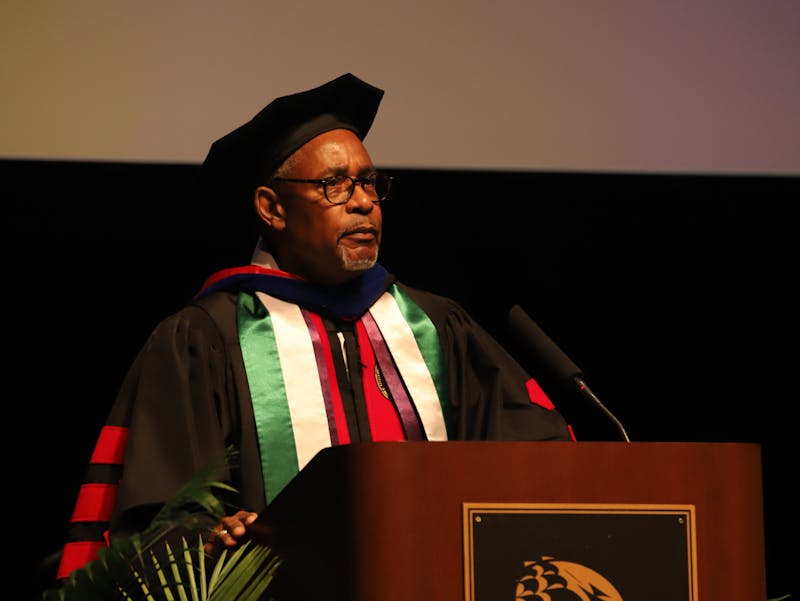Shippensburg University’s celebration of Black History Month kicked off with the Persistent Racial Disparities in Employment Outcomes Panel on Feb. 5.
Manuel “Manny” Ruiz, assistant vice president for inclusion and belonging and director of social equity, began the panel by delivering a land acknowledgement. He said Shippensburg University was built on Susquehannock land, and that the university is committed to working alongside all Indigenous and First Nation peoples.
The panel was split into two sections. The first half was a presentation while the second half was a discussion with the audience.
Ying Yang, associate professor of sociology opened the presentation with a series of data tables and graphs, which showed the historical pay gap between white people compared to people of color, particularly Black Americans.
Yang transitioned to the modern wage and employment gaps. She showed the disparities across different races and genders. She demonstrated how different factors, such as education level, impact different races differently. She emphasized intersectionality and how these factors can affect women, especially women of color, differently.
Yang said, “We need to understand the causes. They tend to get overlooked. We tend to blame the individuals.”
David Monaghan, associate professor of sociology, began his part of the presentation by explaining how to see if differences in employment across races is due to discrimination. He said that certain control groups, such as age and education, would be considered when interpreting the data. The difference within employment outcomes that could not be explained by one of these control groups could be attributed to discrimination.
Monaghan then gave examples of experiments that could be used to prove if discrimination was taking place. One example was sending two identical resumes with one key difference. One would have a stereotypical white name while the other would have a stereotypical Black name. If the resume with the stereotypical Black name did not receive a callback, it could be assumed that discrimination took place.
The panel then moved on to the discussion section, in which staff and students alike asked Yang and Monaghan various questions.
Shippensburg student Jordan Smith said the panel made her realize how wage gaps still exist in the present day.
“What I hope people took away is that there are still disparities between Black and African Americans — two different social constructs — and their white counterparts,” Ruiz said. “There is still an equity gap between men and women. It is something that has been going on for a long time. It is the year 2025 and women are still paid less than their male counterparts, regardless of how you identify race wise. It is astronomically higher for Black and brown women.”



The Slate welcomes thoughtful discussion on all of our stories, but please keep comments civil and on-topic. Read our full guidelines here.